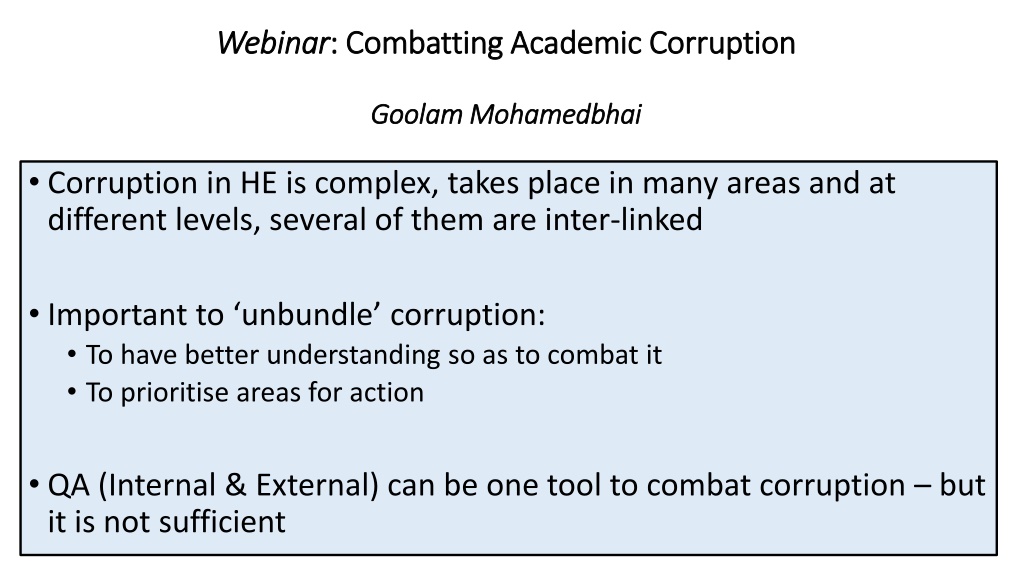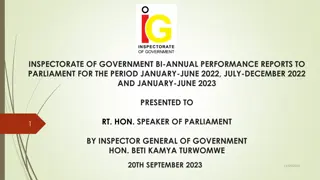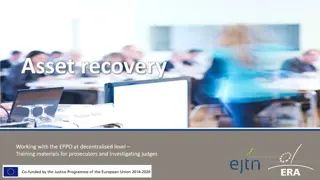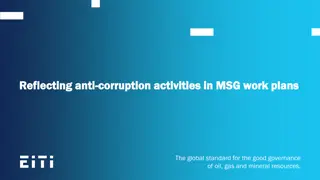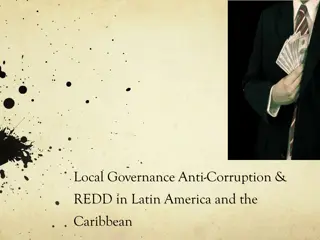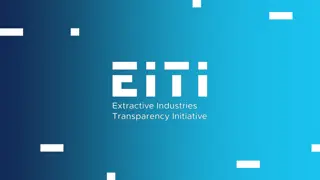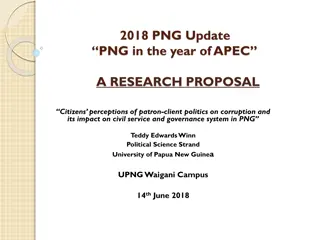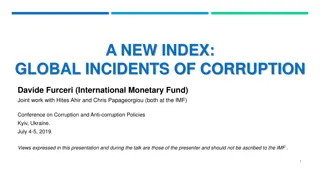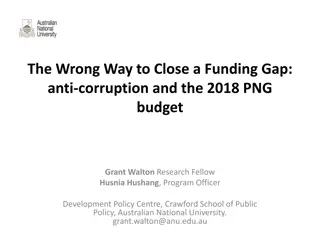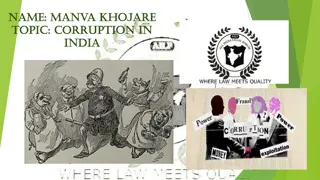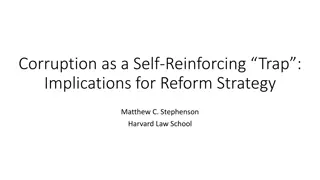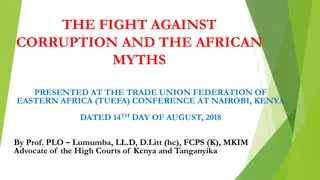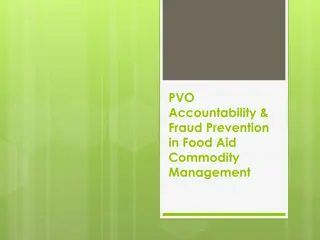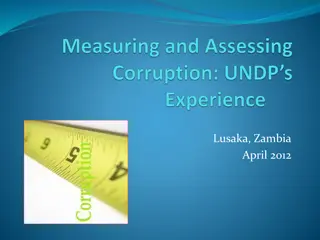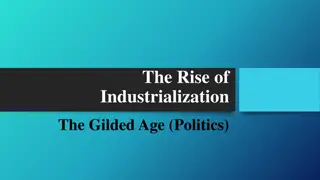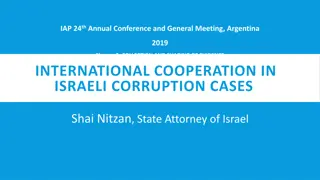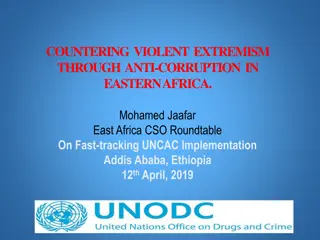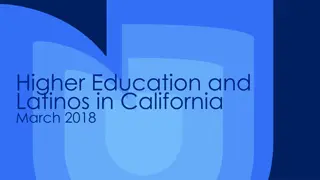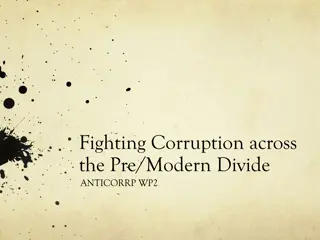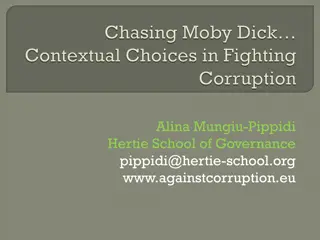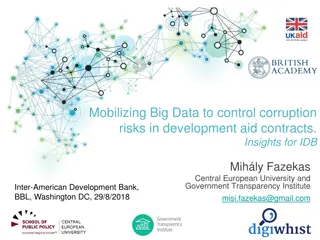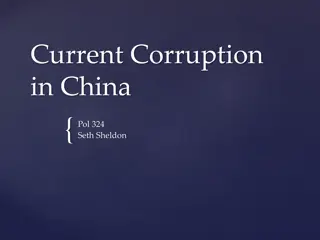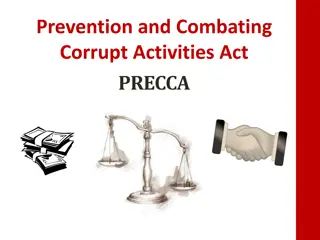Strategies for Combating Academic Corruption in Higher Education
Corruption in higher education is a multifaceted issue that requires unbundling to effectively combat. Strategies include creating awareness, sharing resources, focusing on prevention over punishment, and implementing internal quality assurance systems. Actions within and outside higher education institutions involve developing anti-corruption policies, engaging external quality assurance agencies, and utilizing media platforms. Collaboration and building on existing initiatives are crucial in the fight against academic corruption.
Download Presentation

Please find below an Image/Link to download the presentation.
The content on the website is provided AS IS for your information and personal use only. It may not be sold, licensed, or shared on other websites without obtaining consent from the author. Download presentation by click this link. If you encounter any issues during the download, it is possible that the publisher has removed the file from their server.
E N D
Presentation Transcript
Webinar Webinar: Combatting Academic Corruption : Combatting Academic Corruption Goolam Mohamedbhai Goolam Mohamedbhai Corruption in HE is complex, takes place in many areas and at different levels, several of them are inter-linked Important to unbundle corruption: To have better understanding so as to combat it To prioritise areas for action QA (Internal & External) can be one tool to combat corruption but it is not sufficient
Unbundling Corruption in Higher Education Areas Processes Licensing/Accreditation Governance Student Admissions Teaching/Learning/Assessment Research Academic Credentials Management/Administration What form? Where? How? By Whom? (Actors) Why? Note: Importance of areas would be region- or country-specific
STRATEGY STRATEGY Awareness creation Sharing of resources and experiences Prevention NOT punishment ? Actions needed within HEIs and outside HEIs
Actions Actions Within Within HEIs HEIs Internal QA system Anti-Corruption Policy Document (in addition to Code of Ethics) e.g. University of Nairobi, Kenya, 2010 University Associations (national, regional, international): adopt common approach (e.g. IAU Ethics Guidelines, 2012) share practices & experiences through seminars, etc. Include anti-corruption & promotion of ethical behaviour in all curricula [Poznan Declaration, Compostela Group of Universities, 2014] Involve faculty, staff & students in ALL actions
Actions by Actors Actions by Actors Outside Outside HEIs HEIs External QA Agencies Media Hosting of online platform for news, resources, research publications, etc. on corruption in HE ETICO of UNESCO/IIEP (covers whole education sector) Boston College: HE Corruption Monitor Transparency International National Anti-Corruption Commission (protects whistle blowers) Corruption Watch: South Africa, 2012. Non-profit organisation, provides a platform for reporting on corruption by public
End Note End Note A number of initiatives already exist in fighting corruption in HE aim should be to bring them together and build on them THANK YOU
